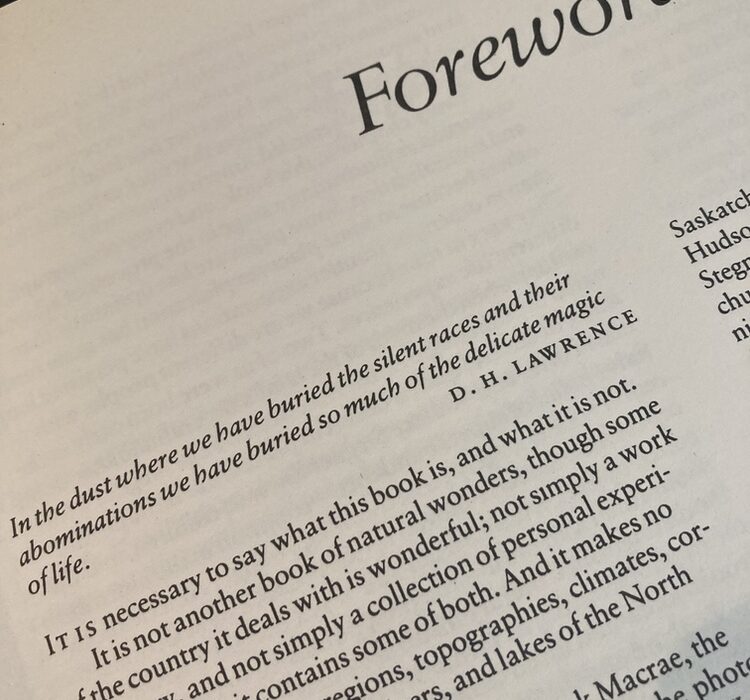Q: I’ve been entirely preoccupied by a most frightening experience of my own. A couple of hours ago, I realized that my body was no longer functioning properly. I felt weak, I could no longer stand. The life was oozing out of me, I lost consciousness.
Picard: You fell asleep.
sigh Sleep. Sweet. Rejuvenating. Blissful. …when you can get it.
Preamble
There is a huge amount of information about sleep available on the Internet. Over the years, I’ve collected a wide range of references upon which I’ve based my actions and opinions. I do this for a lot different topics, and I have a companion web site where I collect all the health related information I’ve found. In the case of Sleep, please see Sleep Quality, Light Sensitivity in the Human Brain, and Magnesium and Sleep over on Hilbert’s Library.
Darkness
I sleep best in complete darkness.
Long ago, I had no idea that light was messing up my sleep quality. Light is everywhere in modern life: it comes from windows, from doorways, from the alarm clock’s LED numerals, from the blinking LEDs on the WiFi router. But, after a lot of reading, and over ten years of experimenting, I’m convinced that light is enemy number one.
Sure there are other things which will wake me, (noise, movement, etc) but light is pervasive. Light is subtle. Light is insidious. Rage! Rage against the light!
So the goal for me is complete darkness.
Aside: Yes, I’ve considered using a sleep mask to cover my eyes. However, the human brain is broadly sensitive to light, so I’m not convinced a light mask is as good as a good old-fashioned dark room. See Light Sensitivity in the Human Brain.
My life is organized around the time on the clock, so I do not have the luxury of arranging my sleep around the sun’s rise and set. Therefore, I needed to manipulate my environment. When I began hacking my sleep at our apartment, my first light source to tackle was a street light that completely illuminated our bedroom through a high window in our cathedral ceiling. I had to buy a tall ladder just so I could climb up and cover the entire window with cardboard wrapped in velvet. Although we only had nearly-useless mini-blinds on all the other windows, this first light-reduction hack made an improvement in my sleep quality.
When we bought a house, the bedroom was the first room we remodeled. We set it up to be PITCH BLACK. The alarm clock is dimmed, there are no chargers or electronics in the room, and I added black-out curtains to the windows. Each night, when I first lie down to sleep, I cannot perceive a difference between having my eyes open or closed. (Of course, by the middle of the night, my dark adapted eyes can easily tell the difference.) If I step out of the bedroom in the wee hours of the night, the rest of the house seems so bright! There’s a light on the smoke detector, all the windows admit outside light, the microwave’s clock, the standby light on the TV, and on and on.
So my first suggestion is to get as close as you can to pitch black. Change things, move things, buy things, whatever — sleep is the most important part of your life.
The alarm clock
Initially, I had a generic alarm clock… beep beep beep BEEEEP! There’s nothing like waking up with a shot of adrenaline and cortisol to start me off on the wrong foot for the day.
First, I changed to an alarm clock which played music, but it had blindingly bright green numerals. Eventually I read about alarm clocks which have a bright light which slowly — over a half hour — fades up to fully illuminate the room. (Search for “Philips HF3470”; It’s discontinued, but it will get you going in the right direction.) Some mornings, the fact that “the sun has come up” in the room is enough to wake me up. But usually, the alarm clock proceeds to an audible alarm, and ours urges us by playing various tweeting bird sounds. (If I wasn’t so deaf, the light would probably wake me up enough to hear the actual birds outside.)
When to sleep
If you have all the above under control, you can technically sleep at any time of day. But there’s a catch: You need time to physiologically wind down before going to sleep. If it’s bright daylight when you want to sleep, you’ll need to craft a dimmed, calm space where you can relax and wind down. (But not where you actually sleep, don’t lay on the bed to wind down. More on not making your bed a multi-use space below.)
Consistency in sleep times is key. There are physiological processes which occur in the body which are not under conscious control. The body works on habit (and environmental cues) and it’s sluggish about changes. Wonky work shifts that make you change your sleeping patters are not healthy; if you’re into that type of work, just realize you’re trading your quality of life to accomplish your job. Be sure it’s worth it.
Remember: For me, sleep is the most important thing in my life. Work, play, scheduling, consistency… these are all things I’m will to work on, hack on, and change, to improve my sleep schedule because poor sleep leads to a poor life.
Temperature
Slightly cooler works for me (and agrees with what I’ve read.) But it doesn’t seem to matter too much. As long as you’re comfortable. But if the temperature is consistently UN-comfortable, you need to correct that.
There are obvious ways to hack the temperature, (e.g., air conditioning, a fan,) but you can also hack the general room environment. Figure out where the air moves through the room. (For example, if air normally moves from your open window to the door, move your bed to be near the window.) Get creative and sling a hammock across your room and sleep close to the floor, (where it’s cooler in summer, or closer to the ceiling where it’s warmer in winter.) Find the room with the best sleeping temperature and move your bedroom there.
Different mattress and sheet surfaces will feel cooler or warmer, so experiment to find what works best for you. Different types and extent of clothing obviously matters, but have you actually experimented to see how what you wear (or don’t wear) affects your perception of temperature?
Comfort
In general, splurge on things for your bed: Mattress, sheets, covers, comforters, pillows etc. Buy the most comfortable mattress, and the sheets you love to slide into. Then go another step and buy two sets of the sheets you love. (When you change the sheets you can strip and immediately remake the bed with clean linen.)
Improve the psychological comfort of your bed. Make changes, and build habits, which make the bed a comfortable, inherently relaxing, space. Room details such as color (hint: darker hues and blues are relaxing), lighting and general “busyness” of the room all have a subtle effect on your mood.
Slightly less obvious is to make your bed every morning. It doesn’t have to be fancy with specific folds or tucks, just make it up to whatever your definition of “made up” is. Later, each time you see the bed it will look inviting all made up, and you’ll look forward to peeling it open and sliding in.
Because it is a large, clear, open, space it will generally attract — but especially if you make it up each morning — random items throughout the day. Pay attention to what ends up on the bed and find proper homes, or invent systems, to keep those things off the bed. (For example: Clothes go ‘here’, worn-but-still-wearable items go ‘there’, pets are excluded by closing the door, put a chair in the room for sitting when dressing, etc.)
Avoidance
I’ve read various things about avoiding blue light in general, computer screens, TV, etc. But I’ve found that simply avoiding whatever it is that “winds me up” is sufficient to not sabotage my sleep. So, while I will look at my computer or phone near bed time, I don’t go to web sites or apps where I know I’ll get sucked down the rabbit hole. Instead, I’ll read through news feeds, e-books, or review my personal productivity systems and to-do lists. A lot of being able to readily fall asleep is related to my thinking-brain being relaxed. If there are things on my mind then I find I’ll be stuck laying awake in bed.
Eating
As with everything here, the key is to figure out what foods, and what eating times, affect your sleep.
I try to avoid eating within a few hours of going to sleep.
(In another part of this series, I’ll talk about intermittent fasting.) I find that I can sleep very well after a meal, particularly if I’ve had a couple hours for my digestion to get started.
What I’ve eaten also has a huge impact on my ability to fall asleep, and on my sleep quality. Too many sweets, or almost any amount of alcohol, to close to bed time will affect my sleep; I can fall asleep, but after an hour or so I find I’m wide awake. Same thing if I drink too much coffee. I’m pretty sure the stimulants (sugar, caffeine) and depressants (alcohol) affect my ability to reach the deeper sleep levels, and so I wake up instead of sleeping deeply. There’s a tremendous amount of information available about food and diet. Related to sleep, it’s worth looking into issues of digestion and experimenting to see what works for you.
Magnesium
There is solid evidence that Magnesium deficiency can cause sleep problems (restless legs, muscle cramps and more.) It is also a well-known relaxant. So that’s doubly suggestive that Magnesium (reading, experimentation, supplementation) could be very useful in improving your sleep. See Magnesium and Sleep.
Technology
There’s a lot you can do in terms of tracking sleep with things like Fitbits and Beddits. (Tracking is part of the “quantified self” movement.) Here again, the goal would be to measure something (sleep duration, quality, presence of sleep apnea, number of sleep cycles, etc.,) correlate that with how you feel and how it affects your life, and then make adjustments to your sleeping environment, habits and life in general. I did a small amount of tracking with a Fitbit. (I didn’t like the blindingly-bright green lights it uses for the pulse sensor. That’s how dark it is where I sleep.) But, for the period of time when I was tracking my sleep quality, it certainly helped focus my attention and efforts on improving my sleep.
Mental Activity
If I have too much on my mind, I sometimes have trouble falling asleep. When I first started working on my sleep I wasn’t yet journaling. Years later I started journaling and I found that emptying my brain in the evening was a wonderfully relaxing way to prepare for bed. Over the years, it became clear that as my time ran out each day, sitting down consistently to journal was difficult. So these days, I don’t regularly journal in the evening. (Instead, I write as part of my morning routine.) But sometimes I will journal to empty my thoughts if I feel that I’ve too much on my mind to readily fall asleep.
Room Usage
Don’t do anything other than sleep in your bed. Don’t read in bed, watch tv, or use digital devices. Whatever you do regularly, that is what you’re training yourself to do in that space. Have a “going to bed” routine, and turn out the lights.
Napping
For me, I can take a half hour blink-nap in the afternoon without it missing up my sleep. (A blink-nap is where I’m thinking, “I feel like I need a nap,” I lay down, blink, and a half hour has elapsed.)
Next up…
A few things I have not tried…
ɕ














